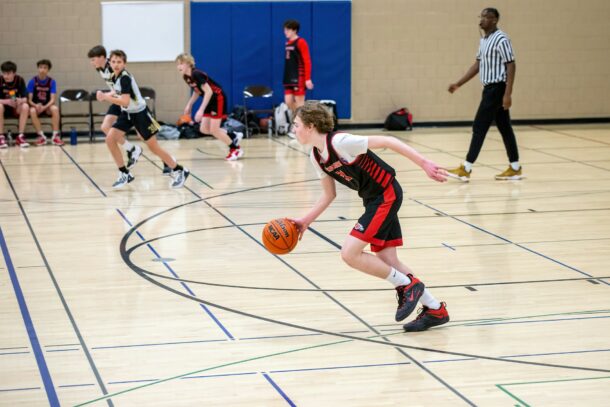Coaches always need to consider data when evaluating their team’s latest performance. That data often instructs what the focus might be for the next practice. But any given basketball game provides hundreds of potential data points. These contests also vary wildly given external and uncontrollable factors. So here’s a look at 10 Ways to Evaluate a Basketball Game.
10 Ways to Evaluate a Basketball Game
- Turnover Margin
- Rebounding Margin
- Field Goal Attempts
- Shooting Percentage
- Free Throw Attempts
- Defensive Effectiveness
- 3-Point Game
- Floor Game
- Assist Margin
- Momentum
The Breakdown
These 10 ways to evaluate a basketball game may seem arbitrary but they each focus on specific production.
Turnover margin and rebounding margin both indicate how well your team is controlling the basketball. Naturally, your team wants to limit turnovers on offense and leverage turnovers on defense. The same is true with rebounding. If your team is securing more missed shots, then your team has more opportunities to score.
Tracking those scoring opportunities are important as well. Considering no team will ever make every single shot it takes, having more total shots shifts the odds in your team’s favor. However, not all shot attempts are created equal. Your team should focus on quality shots.
Offense
Having quality shot attempts will improve your team’s field goal percentage. This efficiency stat stands as a key market for in-game success. Furthermore, your team should be look to leverage your best shooter while minimizing the weakest ones.
Free Throw Attempts stand among the highest percentage shots available, so piling up those tries are key. But it’s not enough to get the attempts, great teams make their free throws at a high clip.
Defense
For defensive effectiveness, your team should look to limit the opponent’s scoring opportunities. What’s more, your defense should make it a goal to limit opposing players to no more than 10-15 points.
The three-point game stands as an opportunity to leverage effective offensive play. Look to get your best distance shooters open shots while preventing the opposing team from similar opportunities. Your defense should force opposing shooters into creating their own offense rather than standing still and hoisting from deep.
Your team’s floor game consists of getting loose balls, 50-50 balls, taking charges, saving the ball, etc. These moments can be hidden on a traditional stat sheet, but they create additional opportunities for the team.
The team should always look to help each other and create offensive opportunities for teammates. Creating those opportunities stresses opposing defenses. Likewise, keeping the opposing team from creating a similar offensive flow hurts their rhythm on that end as well.
And each of these builds to swinging the game’s momentum in your favor.
Related: Conducting Effective Basketball Tryouts
Resources:
Coach Unplugged Podcast

Ep: 382 10 Ways to Evaluate a Basketball Game
If you found this useful, don’t forget to check out additional blog posts at TeachHoops.com. Also, check out TeachHoops on Facebook, Twitter, Instagram and YouTube.






